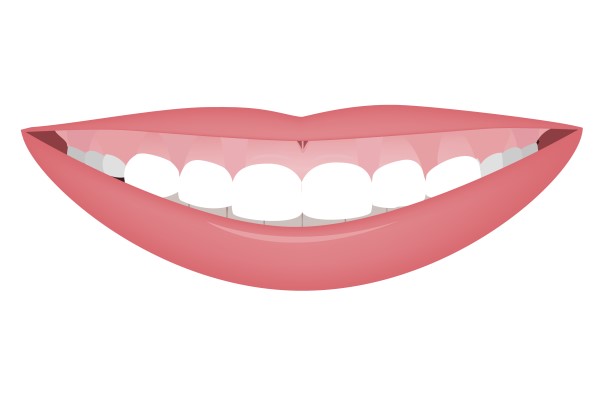Will a Gummy Smile Resolve on Its Own?

A "gummy smile" occurs when more gums show in the smile than is preferred. According to a 2006 study in the American Journal of Orthodontics and Dentofacial Orthopedics, participants rated smiles showing 3 to 4 millimeters of gum as unattractive. They are healthy unless related to an abnormal bite or overgrowth of the gums but are unlikely to change without a procedure.
Causes of a gummy smile
There are certain cases in which a gummy smile can be a symptom of a more serious condition. If a patient's gums are overgrowing (gingival hyperplasia) it could lead to gum disease. Such as smile may also be the result of a misaligned jaw.
If there is not another underlying condition, a gummy smile is most likely caused by variations in the growth of the teeth, gums, and jaws. If the upper jaw is longer than normal, it can cause the gums to show too much in a smile. They can also be caused by altered passive eruption, which occurs when the gums covered a significant portion of the teeth when they came in. Overerupted teeth can also cause overgrown gums.
Treatments for a gummy smile
Gummy smiles are undesirable to a number of patients. As a result, dentists and doctors have developed a variety of treatments that range in cost and invasiveness. Choosing the right one depends on the patient's goals and state of health.
Botox® injections
These injections are usually repeated every three to four months. While results vary based on the patient, the majority of people can have a gummy smile reduced by Botox® injections.
Hyaluronic acid fillers
Hyaluronic acid can be used as an alternative to Botox® to restrict the movement of the upper lip. These treatments can last as long as eight months.
Temporary anchorage devices
TADs can reposition your teeth to reduce a gummy smile. They can be an alternative to surgery if the patient's situation is viable.
Gingivectomy
A gingivectomy involves reshaping the gums with a laser. The recovery is about a week, and a repeat procedure may be necessary.
Lip repositioning surgery
Lip repositioning surgery alters the connective tissue of the lip to prevent a gummy smile. Recovery time is about one week.
Orthognathic surgery
Orthognathic surgery alters the patient's jaw length to balance out the smile. Recovery time is six to 12 weeks.
It is highly recommended that patients consult with both their dentist and doctor before undergoing a procedure, especially if they opt for surgery. Insurance companies may also not pay for the procedure if they deem it purely cosmetic. The option that works for a given patient depends on their values and situation.
Conclusion
Gummy smiles can be treated. Depending on the patient, a range of procedures are available. No matter the situation, consultation with a dentist or doctor is highly recommended to make a choice that is beneficial for a patient's health and wellbeing.
Request an appointment here: https://www.roderickgarciadmd.com or call Roderick A. Garcia, DMD PC at (505) 634-5029 for an appointment in our Albuquerque office.
Check out what others are saying about our dental services on Yelp: What Is Gum Contouring in Albuquerque, NM.
Recent Posts
Looking into gum contouring options? Many people who have a gummy smile undergo dental treatment to make their smiles more attractive. General dentists who offer cosmetic services can treat gummy smiles through a gum contouring procedure. Ready to learn more?Understanding what is involved with gum contouring treatment is the first step one needs to make…
In all your trips to the dentist, gum contouring may not have been the first thing on your mind. As you become increasingly more concerned about the way you look, however, you may want to consider learning more. You can find a dentist near you with the knowledge and training to reshape your gums and…
A dentist may recommend gum grafting if a patient has experienced significant gum recession that affects both their oral health and appearance. What can you expect when you visit the dentist for this procedure? Keep reading to find out.Often, it is easy to see that a gum graft treatment is necessary. The teeth appear abnormally…
The gum graft procedure is typically performed to help repair damage caused by gum disease like receding gums. Gum recession leads to teeth roots being exposed, making them more vulnerable to decay and affecting the appearance of the person’s smile. A gum graft involves taking healthy gum tissues from other parts of a person’s jaw…


